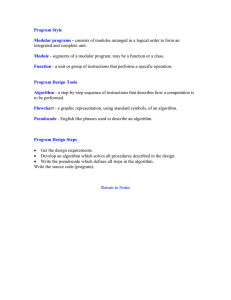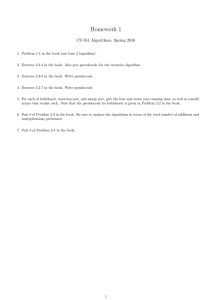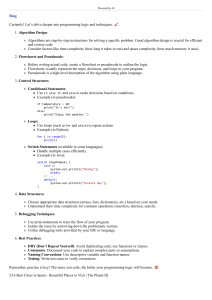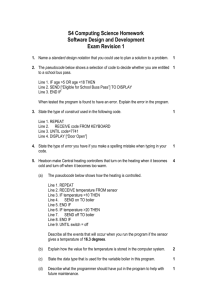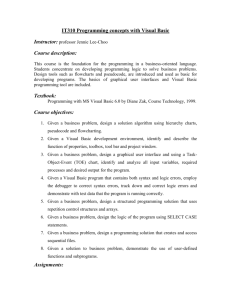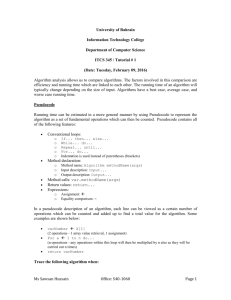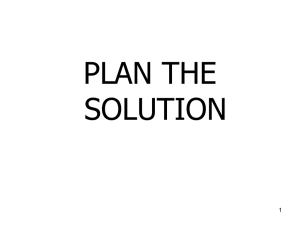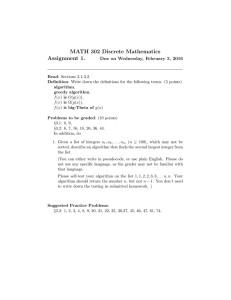1 – Aset of objects that share a common structure and acommon
advertisement
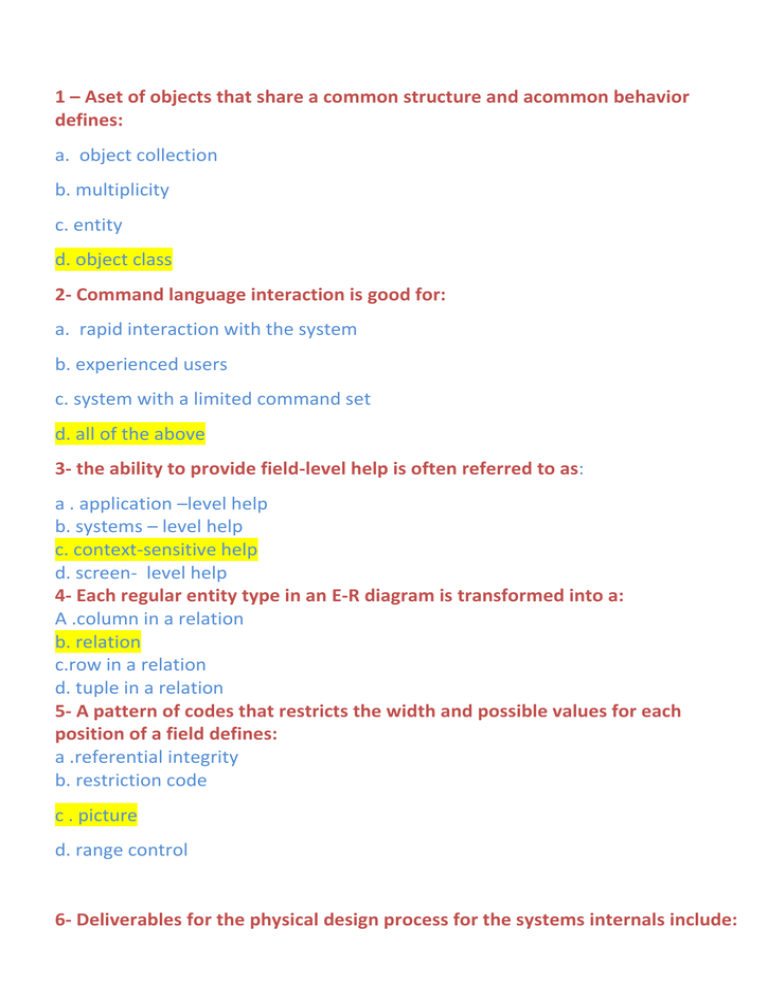
1 – Aset of objects that share a common structure and acommon behavior defines: a. object collection b. multiplicity c. entity d. object class 2- Command language interaction is good for: a. rapid interaction with the system b. experienced users c. system with a limited command set d. all of the above 3- the ability to provide field-level help is often referred to as: a . application –level help b. systems – level help c. context-sensitive help d. screen- level help 4- Each regular entity type in an E-R diagram is transformed into a: A .column in a relation b. relation c.row in a relation d. tuple in a relation 5- A pattern of codes that restricts the width and possible values for each position of a field defines: a .referential integrity b. restriction code c . picture d. range control 6- Deliverables for the physical design process for the systems internals include: a . requirements statement b. a set of structure charts c. a set of physical design specifications for each separate part of the system d. both b and c 7- All of the following are true statements except: a . the format and phrasing of pseudo code is not as important as the information it conveys b. analysts use a standard version of pseudocode called SQL c. the actual form pseudocode takes will depend on the programming languages the analyst knows bets d. the purpose of pseudocode is representing program code as text 8- Which of the following is an advantage of data replication ? a . complexity and cost of updating b. reliability c. storage requirements d. both a and c 9- A testing technique in which the program code is sequentially executed mentally by the reviewer is referred to as : a . desk checking b. inspection c. syntax checking d. system testing 10- An SSR or similar document can be use to: a . request new development b. all of the above c. request new system features with an existing system d. report problems 11- Describe the process of designing interfaces and dialogues? see pages (554-588) 12- What are the deliverables and outcomes coding. Testing and installation? See pages (764-766)
